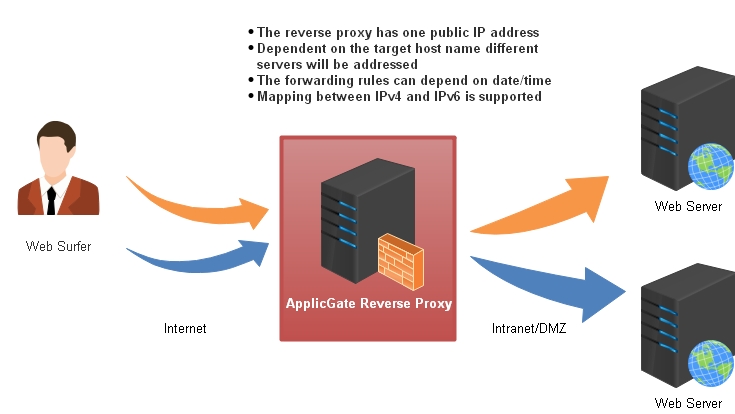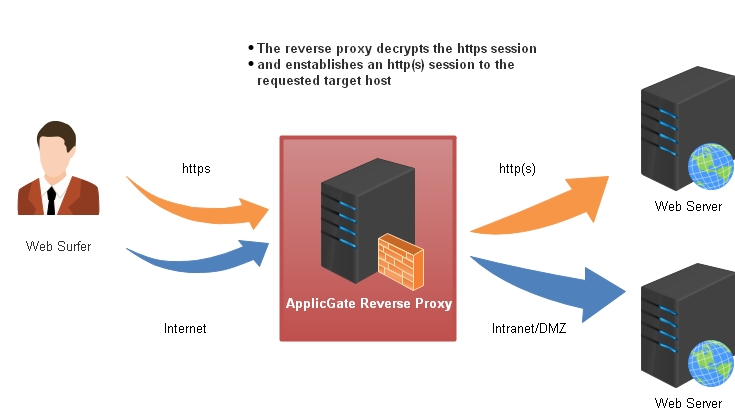Looking for a Reverse Proxy?

The reverse proxy is a type of proxy server that retrieves resources on behalf of a client from one or more servers. These resources are then returned to the client, appearing as if they originated from the proxy server itself.
- ApplicGate uses the http “Host” header to address the target server.
- A public IP address can be shared by multiple servers.
- Forwarding to the servers can be controlled by timers.
- Https is supported.
- IPv4 and IPv6 are supported.

Use Cases/TechInfo
Shortage of public IP Addresses?
If you have multiple web servers that should share one public IP address then this is the perfect solution for you. There is nothing to do at the client side!
Timer controlled forwarding
Different web pages or servers can be addressed depending on data or time.
Support of https
Requests can be forwarded to different target servers even if the connection is encrypted. The reverse web proxy decrypts the https session and forwards it to the requested target server (encrypted or clear text).
IPv4 <-> IPv6 Conversion
IPv4 clients can reach IPv4 and IPv6 web servers, IPv6 clients can reach IPv4 and IPv6 web servers. This feature helps for IPv4 to IPv6 migration.
FAQ + Techblog
Q: Is ApplicGate available for Linux also?
A: Yes, it is. Send an email to contact@applicgate.com and we will be glad to send you a version built for Linux.
How to tunnel UDP traffic over TCP
If you would like to secure UDP traffic via unsecure networks or network segments you can add authentication and encryption easily.



